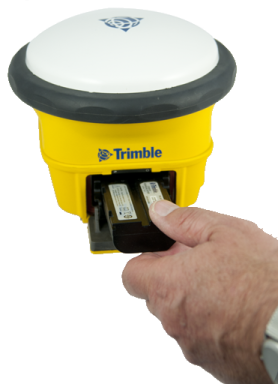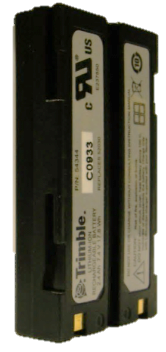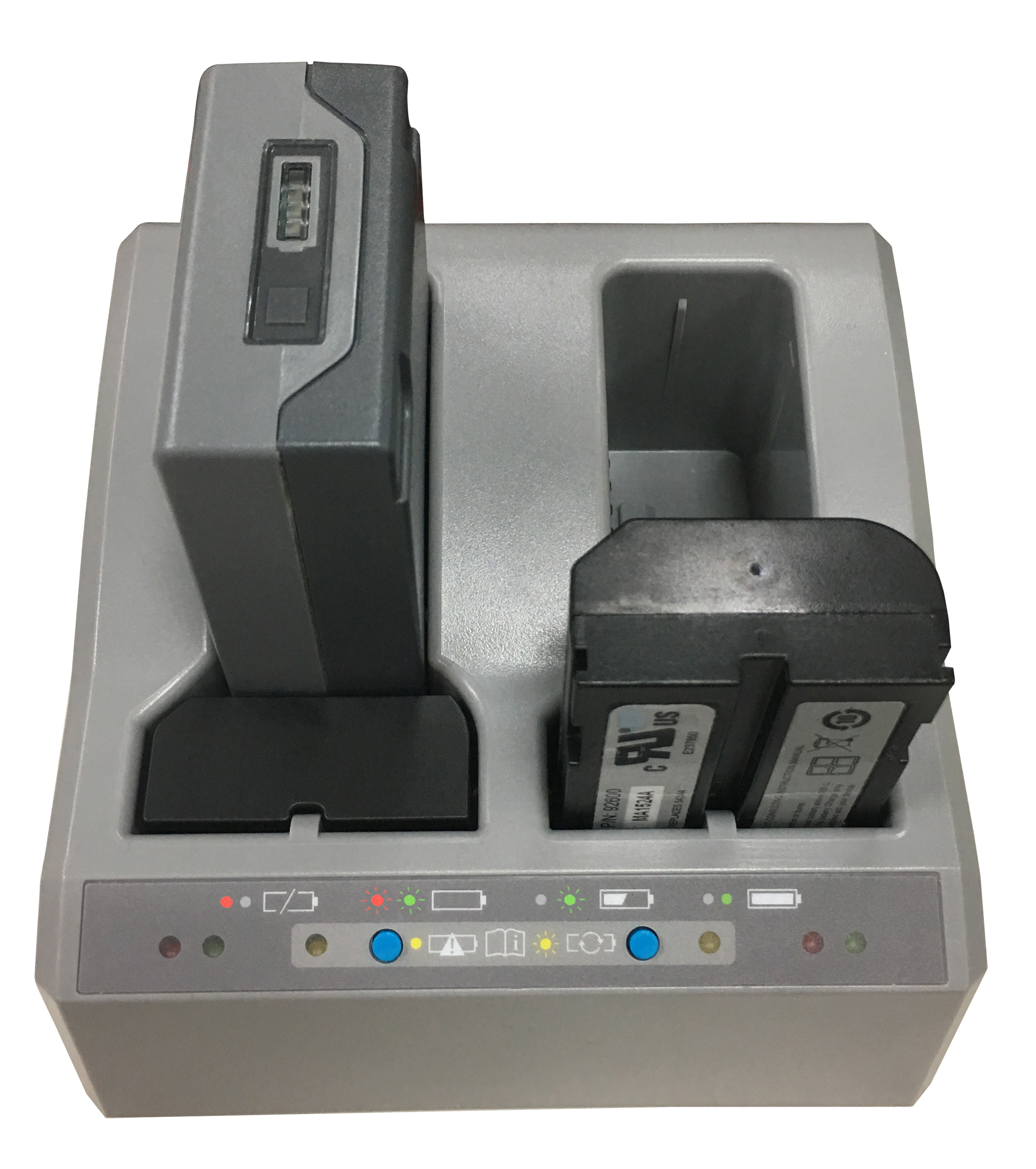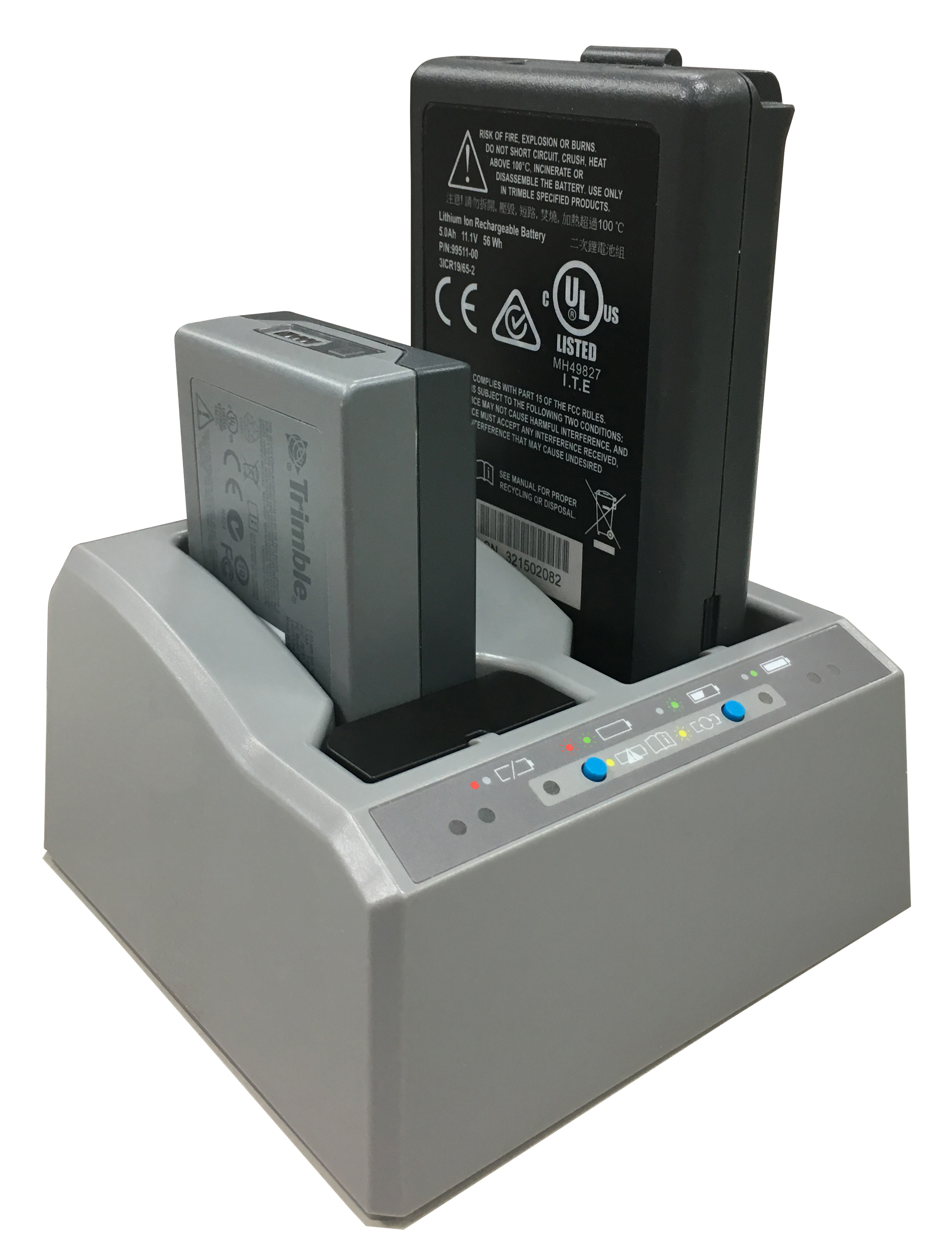Overview
The charger can charge three types of Lithium-ion batteries. It can be powered by mains or car battery. The charger can be used either in the office or car.
The dual-slot battery charger consists of:
-
Charger Dual-Slot, P/N 109000
-
Power Supply for Charger Dual Slot, P/N 107000
-
Power Cord AC for Power Supply
-
Cable Car to Charger Dual Slot, P/N 108090
Chargeable batteries
|
||
|
||
|
P/N 99511-30 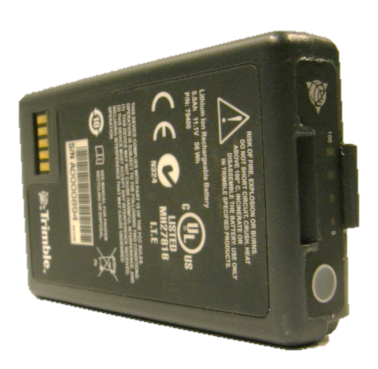
|
P/N 76767 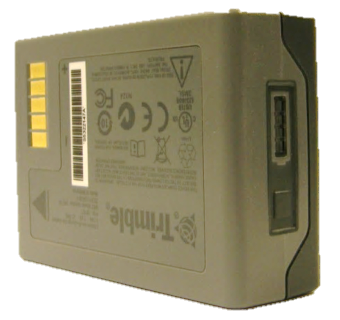

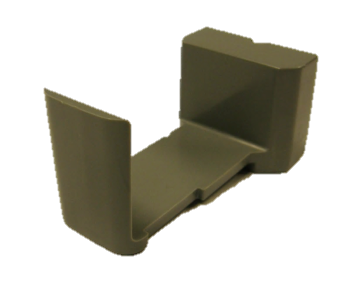
|
|
|
|
|
|
P/N 92670
|
|
|
Placement of batteries in charger
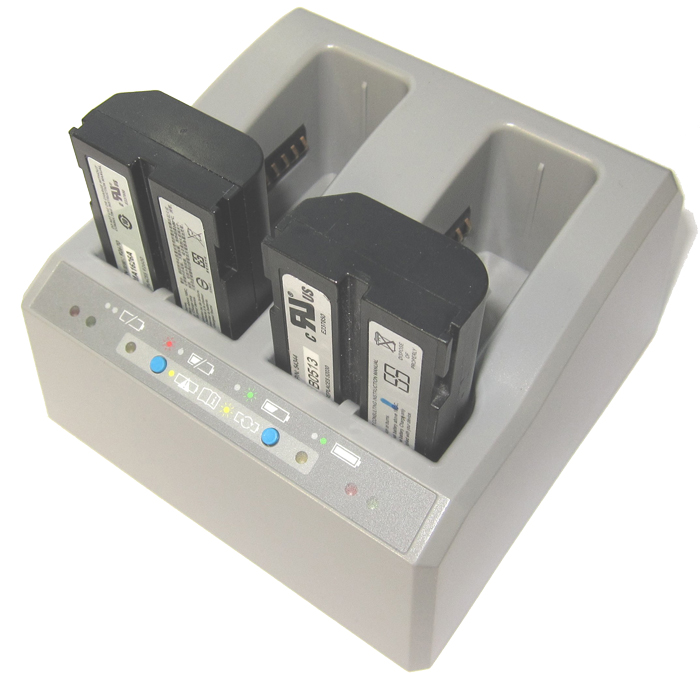
|
|
|
Charger slots
The charger has two slots. Each slot can charge one of the three supported battery types. Batteries are charged concurrently for P/N 92670 and P/N 76767 battery types and sequentially for the P/N 99511-30 battery type. Beside each slot are three LED indicators (red, yellow, and green) to indicate the battery and charging / conditioning status.
Power supply
The charger can be powered by mains (using the Power Supply for Charger Dual Slot) or by 12V car voltage (using Cable Car to Charger Dual Slot).
Mains power
Mains power supply is an external adapter, useable worldwide. Different cords for different countries are supplied with the power supply adapter (Power Cord AC for Power Supply).
Vehicle power
The charger can be powered by the vehicle voltage of nominal 12V. It can withstand voltages of a vehicle voltage of nominal 24V (max. 32V). So if the user connects the vehicle cable by mistake to a 24V socket in a vehicle, the charger doesn’t start charging but latches in fault condition and flashes all green LEDs. The power must be removed to reset the fault condition.
Charger technical data
|
DC Power Input Voltage limits |
10 to 32 V |
|
Absolute maximum input voltage |
32 V |
|
Over voltage |
21 to 32 V |
|
Working voltage |
10 to 21 V |
|
Under voltage |
<10 V |
|
|
|
|
Charging (19 V in, 25 °C, 10% to 90% charge) |
|
|
<3 hours |
|
<3 hours |
|
<4 hours |
|
Charging (12 V in, 25 °C, 10% to 90% charge) |
|
|
<3 hours |
|
<3 hours |
|
<6 hours |
Battery life
You should expect the battery to take 300 charges. Some batteries may last up to 500 charges. The battery life will decrease over time as the battery is used more, especially if the batteries are used in hot areas or in high current situations, like a base station.
It will not harm the battery if it is half used before you place it in the charger. You do not need to drain the battery fully. However, charging a half-used battery still counts toward the number of expected battery chargers over the life of the battery.
There is no memory build up with these batteries. Trimble recommends that you store the battery when it is fully charged. Batteries may experience a 5 to 20% discharge per month when they are not being used. If the battery is stored for weeks at a time fully discharged, a significant loss of charging capacity could occur.
Temperature considerations
In general, you will see a decrease in battery runtime if the batteries are used in colder temperatures. Higher temperatures are better for battery operation as long as the temperature does not exceed 40 °C (104 °F). If operating in less than 5 °C (41 °F), there will be significant decrease in battery runtime. If the battery has been stored at less than 5 °C (41 °F), it may not work at all until it is stored at room temperature (20 °C to 25 °C (68 °F to 77 °F). Batteries should not be used if temperatures are below -20 °C (-4 °F) or above 50 °C (122 °F).
Removing the battery from the smart antenna
-
Open the battery slot, which is on the side of the smart antenna.
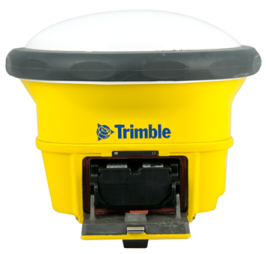
-
Pull the battery out of the slot.
